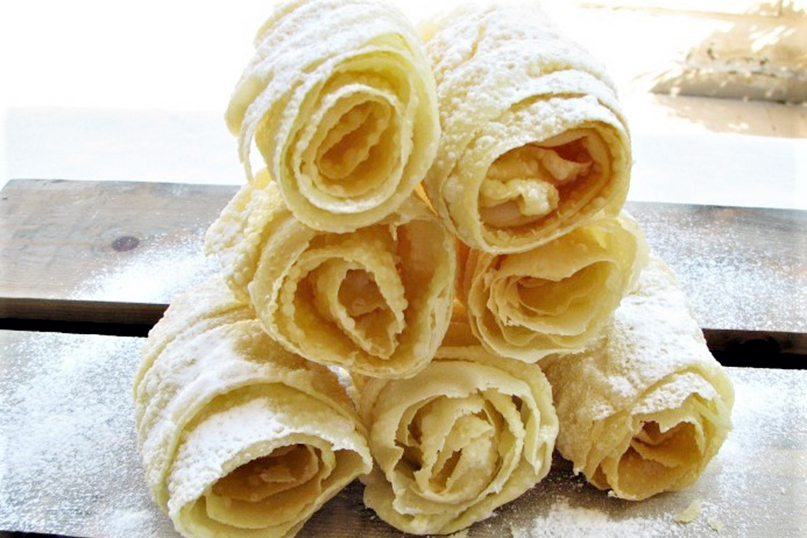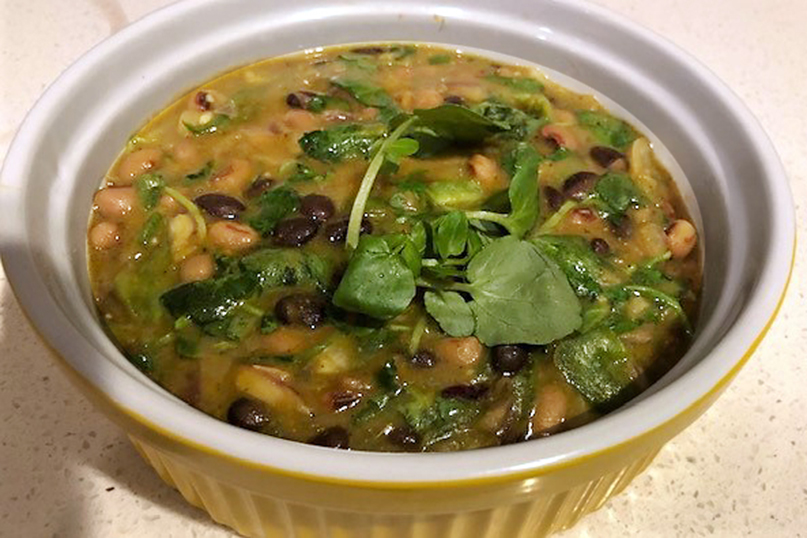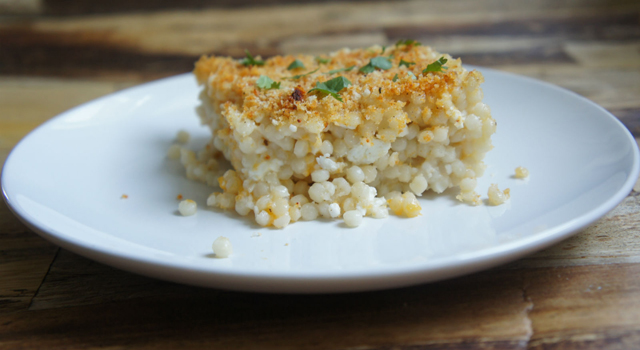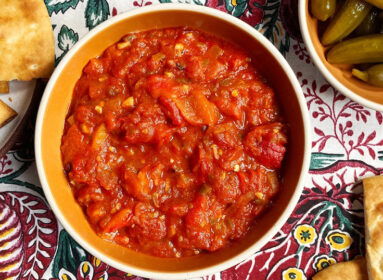
By Ethel G. Hofman
(JNS) The most jubilant holiday in the Jewish calendar, Purim is a celebration of good over evil; the defeat of Haman and his plans to exterminate the Jews of Persia. On this wild and nutty holiday, almost anything goes. Good-natured tricks, jokes, costumes, masks, treats–it’s a time to be downright silly.
Back in the olden days (just a year ago), in synagogues all over the world, there were masquerades, drinking, dancing, a festive meal. There was foot-stamping and grogger-spinning. Everyone, adults and kids, dressed up in costume, parading around the room.
Then the coronavirus pandemic struck with its social distancing, restrictions, lock-downs, masking and hand-sanitizing. Now masks have taken on a whole new meaning. But take heart! We can still enjoy the holiday, albeit at home instead of at synagogue, school or the Jewish community center.
For families, plan a Purim “cook-in.” Kids will be thrilled to help measure and stir, filling shalach manot for friends and neighbors in sanitary plastic bags. The most popular Purim treat, hamantaschen, is widely available in supermarkets and bakeries. But the best are homemade, along with your own lekvar, the traditional prune filling. In Yiddish, the three-cornered pastries mean “Haman’s pockets,” as they resemble Haman’s tri-cornered hat, his pockets, even his ears. Sephardic Jews, in fact, deep-fry dough twisted to resemble Haman’s ears.
But besides the sweet stuff, it’s also the custom to eat peas and bean dishes. The tradition goes that in the court of King Ahasuerus, young Jewish Queen Esther did not want to eat non-kosher foods. She became vegetarian, eating mainly peas and bean dishes. The technique of browning a roux, a mixture of oil or butter and flour, imparts a rich, nutty flavor to Queen Esther’s Gumbo. For my Zoom Purim supper, I’ll spoon the thick bean stew spiked with bold Masala spice over hot, fluffy rice. I keep Masala spice on hand to use in a score of soups, stews and savory dishes like a frittata. An aromatic mixture of cumin, coriander, pepper and cardamom, it packs a mouthwatering punch to soups, stews and savory dishes.
Queen Esther’s Gumbo (Pareve)
Serves 4-6
Chef’s notes: For Masala spice: ½ teaspoon each, cumin, coriander, cardamom and ground black pepper. Substitute spinach, collard greens or any other leafy vegetable for watercress. Chop onion and bell pepper together in a food processor.
Ingredients:
¼ cup vegetable oil
¼ cup flour
1 medium red onion, chopped coarsely
1 medium green bell pepper, seeded and chopped coarsely
1½ teaspoons bottled minced garlic
2 cups vegetarian broth
1 can (15.5 ounces) kidney beans, drained
1 can (15.5 ounces) black-eyed peas, drained
2 teaspoons Masala spice
2 cups watercress, coarsely shredded

Directions:
Heat the oil in a heavy pot over medium-high heat. Stir in the flour. Cook, 4-5 minutes, stirring constantly until the mixture turns medium brown. Stir in the onion, bell pepper and garlic. Cook, stirring, until vegetables begin to soften, about 4-5 minutes. Add the broth, beans, peas and Masala spice. Stir and reduce heat to low. Simmer 10 minutes. Stir in the watercress. Spoon over rice to serve.
Deep-Fried Haman’s Ears (Pareve)
Makes 12-15
Cook’s Tips: Substitute 1½ teaspoons vanilla extract for rosewater. Substitute 1 table-spoon finely grated fresh ginger for powdered ginger.
Ingredients:
1 cup all-purpose flour
¾ teaspoon baking powder
2 tablespoons sugar
1 teaspoon powdered ginger
1 egg, lightly beaten
2 tablespoons vegetable oil
2 teaspoons rosewater vegetable oil for frying
confectioners’ sugar

Directions:
In a medium bowl, mix the flour, baking powder, sugar and ginger. Make a well in the center. Pour in the egg, oil and rosewater. Mix well. Turn onto a floured board and knead until smooth about 1 minute. If too sticky, add a little more flour. Cover and chill for 1 hour. Pinch off small pieces, about the size of a large walnut. Twist to resemble Haman’s ears. (No need to be perfect; it’s said that Haman’s ears were knobby.) Heat about ½-inch oil over medium heat. A cube of bread should brown in 50-60 seconds. Add the ears making sure they don’t touch. Fry until puffed and golden on all sides.
Drain on paper towels. Cool and dredge with confectioners’ sugar.
Hasty Hamantaschen (Dairy)
Makes 10
From my book, Everyday Cooking for the Jewish Home. Cook’s Tips: Make your own lekvar (easy recipe below). May substitute beaten egg for water to dampen.
Ingredients:
½ cup bottled lekvar (prune butter)
1 tablespoon grated lemon zest
½ teaspoon cinnamon
1 package (7.5 ounces) refrigerated biscuits
2 tablespoons honey, warmed
Directions:
Preheat oven to 400 degrees. In a small bowl, mix lekvar, lemon zest and cinnamon. Set aside. Separate the biscuits. On a lightly floured board, flatten biscuits into a round, about 2½ inches in diameter. Place a teaspoon filling in center of each biscuit. Dampen edges with water. Fold edges over filling to form a three-sided pyramid, leaving some filling uncovered. Place about 2 inches apart on a large, ungreased cookie sheet. Bake in preheated oven 10-12 minutes until golden. Brush with honey and cool.
‘Lekvar’: Prune Filling (Pareve)
Makes ¾ to 1 cup
Cook’s Tips: For apricot filling, substitute dried apricots for prunes. Prepare filling 2-3 days ahead and refrigerate.
Ingredients:
½ cup (10-12) pitted prunes
½ cup orange juice
2 tablespoons lemon juice
1 teaspoon sugar
½ teaspoon cinnamon
Directions:
Place prunes, orange juice and lemon juice in a small saucepan. Bring to boil over medium heat. Reduce heat to simmer. Cook until about 3 tablespoons liquid remains. Remove from heat, add the sugar and cinnamon.Transfer to food processor. Pulse to a coarse paste. Cool completely to use as needed.
Ethel G. Hofman is a widely syndicated American Jewish food and travel columnist, author and culinary consultant.







 Southern New England Jewish Ledger
Southern New England Jewish Ledger















